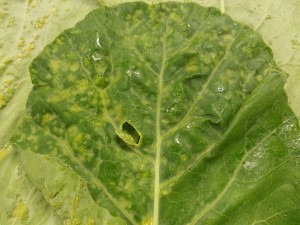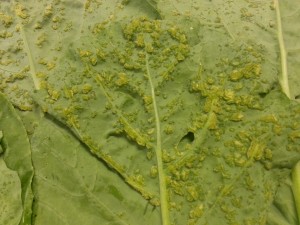Late blight has been found in a 2 acre organic tomato field in Mercer County. This is the first report of Late blight in New Jersey this growing season.
All tomato and potato growers in New Jersey should scout thier fields immediately, especially if fields have not been scouted in the the last 5 to 7 days. At this point, this is just an isolated case. Late blight has not been reported elsewhere in the state. All tomato and potato growers should continue with their regular protectant fungicide programs. The extremely hot weather (> 90 degrees) the last few days should help reduce the threat of late blight as long as the isolated rain showers have missed your farm.
If you suspect late blight on your farm please contact your county agent. For more information on the control of Late blight please see the 2013 commercial vegetable production recommendations guide.


